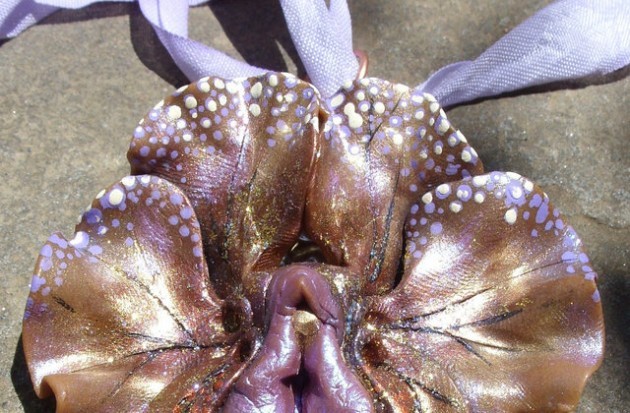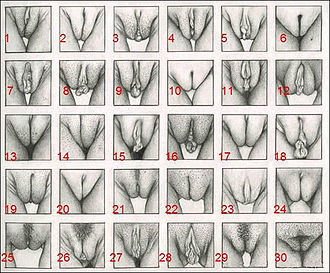June 15, 2009
Vulva 101

 Vulva, vulva, vulva. Say it with pride if you have one or love one. Unlike the oh-so-popular vagina, with its many euphemisms à la va-jay-jay and other less-respectful terms, the vulva has not yet been put through the linguistic, misogynist ringer.
Vulva, vulva, vulva. Say it with pride if you have one or love one. Unlike the oh-so-popular vagina, with its many euphemisms à la va-jay-jay and other less-respectful terms, the vulva has not yet been put through the linguistic, misogynist ringer.
This lesser-known, but remarkably important region, is inaccurately used synonymously with the vagina. I’d like to officially clear things up:
The vagina is the interior space beginning at the entrance of the vagina and ending at the cervix (the entrance to the uterus). It is a muscular structure that can sometimes be difficult to locate for young women, as it is a potential space as opposed to a wide-open hole. The walls of the vagina generally touch in a relaxed state and during arousal this elastic tube-like structure can expand to accommodate an inserted object. The vagina is composed of expandable tissue and functions as a passageway for childbirth, provides a barrier against harmful bacteria and accommodates penises and other objects during sexual activity.
The vulva is comprised of the outer parts of a woman’s genital organs and is analogous to the lips of the face, while the vagina might be compared to the space inside the mouth. The vulva includes the inner and outer labia (lips), the vaginal opening, the clitoral glans and hood, the urethral meatus (pee hole) and the pubic mound (area over the pubic bone upon which pubic hair grows).
While the vagina is often referred to as the central feature of female sexuality and pleasure, it is the vulva that actually produces the most intense feelings of pleasure (and orgasm) for most women. This is because of the vulva’s exciting relationship with the clitoris. Though the clitoris is erroneously considered a small pea-sized bump rich in nerve endings, it is in fact a large, complex network of fun, pleasure-inducing parts that are interconnected with the vulva.
Sometimes compared to the penis, the eighteen-part clitoris is actually richer in nerve endings and unlike the penis, serves the sole function of providing pleasure. The clitoral glans, hood, bulb and crus include erectile tissue and sensitive nerve endings that can be stimulated by rubbing the vulva from top to bottom, including the inner and outer labia which overlie the erectile tissue of clitoris. For this reason, most women achieve the greatest pleasure and orgasm through the stimulation of their vulvas as opposed to penetration of the vagina alone.
For those over the age of eighteen who are interested in learning about a few specific techniques for pleasuring the vulva, check out these blog entries on the vulva caress and going down on a woman.
Let’s celebrate our beautiful vulvas and demystify some of the misconceptions about what’s going on between a woman’s legs. And now that we’ve cleared up the distinction between the vagina and the vulva, we can begin to discuss vaginal size as a follow-up to the recent penis-piece, “Does Size Really Matter?” Stay tuned for the next instalment, “Demystifying the Vagina”.










